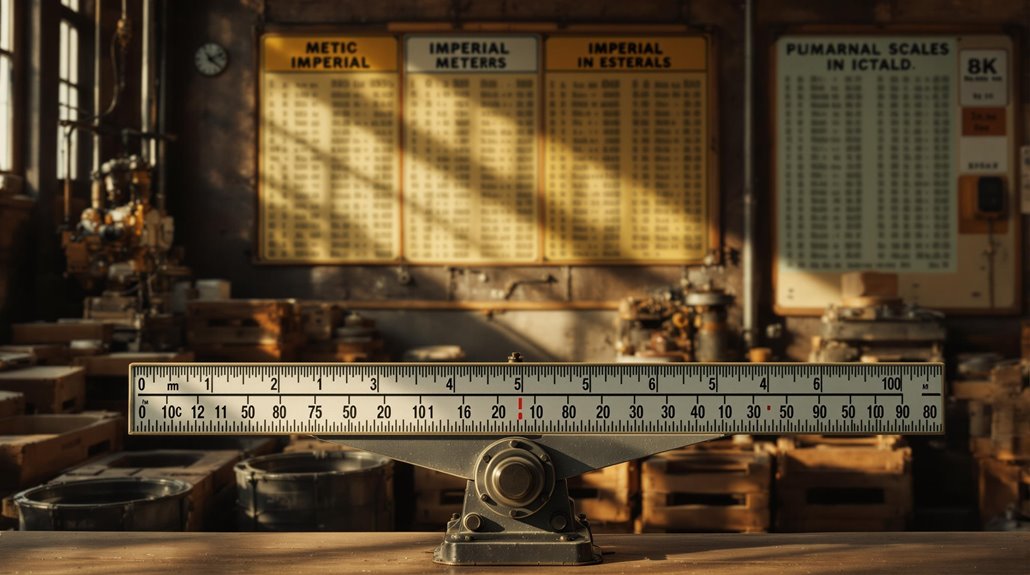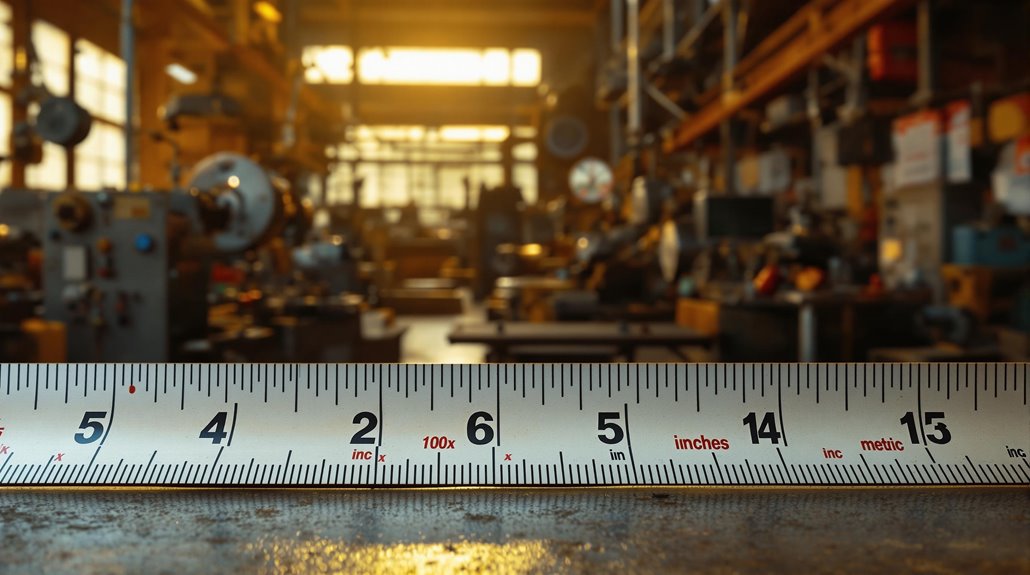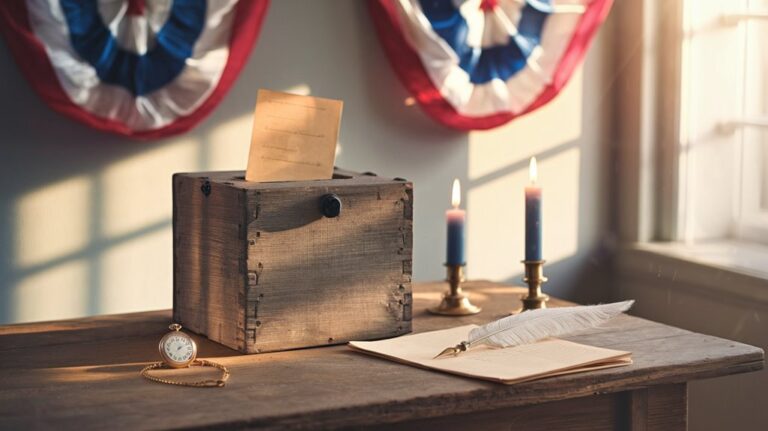The Real Reason Americans Refuse to Go Metric
Picture yourself staring at two road signs: one in miles, the other in kilometers. You've probably never questioned why you instinctively understand the first but need to calculate the second. It's not just about numbers or convenience—America's resistance to the metric system runs deeper than simple stubbornness. From the colonial rebellion to modern cultural identity, you'll find that the real story behind America's measurement choice reveals surprising truths about who we are as a nation.
The Historical Roots of American Measurement

While most nations have fully embraced the metric system, America's relationship with measurement stems from its colonial roots in the English system. You can trace these origins back to Ancient Roman units and Carolingian measures, which shaped the early American approach to measurement.
Colonial influences created a complex landscape as settlers brought various measuring methods from their homelands. This led to significant measurement confusion across the Thirteen Colonies, with no standardized length measures until 1832. The early US Treasury established the first official standard system of weights and measures after the American Revolution.
Even the U.S. gallon developed differently from its British counterpart. Though early American leaders like Thomas Jefferson and John Quincy Adams addressed measurement policy, and the U.S. later signed international metric agreements, the English-based system persisted. French elitism concerns influenced Jefferson's rejection of the metric system.
While industries gradually adopted metric standards, America's historical connection to English units continues to influence its measurement practices today.
Economic Barriers to Metric Conversion
Although the metric system offers global standardization, America's reluctance to fully convert stems largely from economic obstacles.
You'll find that businesses face intimidating cost implications, from replacing calibrated machinery to updating product designs and marketing materials. Workforce retraining adds another layer of expense, requiring significant time and financial investment.
While many U.S. industries already use metric measurements internally, they maintain a dual-system approach to avoid complete conversion costs. The Industrial Revolution's legacy continues to influence manufacturing standards today. Federal agencies have been required to use metric since 1988, yet private industry remains resistant to change.
Small businesses particularly struggle with the upfront expenses, and even larger corporations hesitate without clear government leadership.
The challenge extends to infrastructure, where replacing road signs alone would require substantial funding.
Additionally, some companies fear losing market share to foreign competitors during the shift period, making them even more resistant to change.
Cultural Identity and Measurement Pride
Pride in American identity extends deeply into the nation's stubborn attachment to the imperial measurement system.
You'll find this cultural pride woven into everyday life, where inches, pounds, and miles serve as more than just units of measurement – they're symbols of American heritage and independence.
This measurement identity has become a defining characteristic of American exceptionalism.
The resistance dates back to early American history when Thomas Jefferson rejected the metric system, setting a precedent for future generations.
When you consider that the imperial system predates the nation's founding, it's easy to understand why many Americans view these units as part of their historical legacy.
Similar to how the instrument reveals language usage patterns shape cultural identity, Americans' continued use of imperial measurements reflects a deep connection to their heritage.
You'll notice how imperial measurements are closely tied to cherished national achievements and traditions, while the metric system is often perceived as a foreign intrusion.
For many Americans, defending the imperial system isn't just about maintaining convenience – it's about preserving a piece of their cultural identity.
Failed Government Attempts at Change
The U.S. government's efforts to adopt the metric system reveal a decades-long saga of failed initiatives and lukewarm commitments.
You can trace this pattern through three major attempts: the 1975 Metric Conversion Act, the 1988 Omnibus Trade Act, and Executive Order 12770 in 1991.
Yet each of these government mandates fell short due to weak enforcement and mixed messaging.
The public perception of these attempts hasn't helped either.
When faced with metric conversion, Americans have consistently pushed back.
In fact, only 63 miles of highway in Tucson, Arizona demonstrate any meaningful adoption of metric measurements in U.S. infrastructure.
Consider these telling examples:
- The 3,000 comments opposing metric road signs
- Congress's repeated failure to pass effective legislation
- The U.S. Metric Board's disbandment after just seven years
Without clear timelines, strong enforcement, or genuine public buy-in, these government initiatives have become symbols of America's reluctance to embrace metric change.
The Business World's Mixed Standards

Despite government efforts to standardize measurements, American businesses have created a practical hybrid system that reflects market realities.
Similarly, step-by-step methodologies from modern measurement standards show how multiple systems can coexist effectively.
 any valid measurement while performing necessary conversions between metric and imperial systems.
any valid measurement while performing necessary conversions between metric and imperial systems.
You can see this dual-system success in everyday products, from 2-liter sodas to food labels displaying both grams and ounces.
For American businesses, maintaining this hybrid approach isn't just about resistance to change—it's a strategic choice that maximizes their global reach while preserving domestic market share.
Global Isolation and Its Consequences
While Americans maintain their unique measurement standards, a deeper form of isolation affects people worldwide through diminishing social connections.
Despite our hyper-connected world through social media, people spend less time in real interactions – dropping from 60 to just 20 minutes daily with friends since 2003.
The consequences of this isolation are severe:
- Your risk of premature death increases by 29% – equivalent to smoking 15 cigarettes daily
- You're more vulnerable to heart disease, stroke, and mental health issues
- Your community engagement suffers, leading to $154 billion in workplace losses annually
Recent studies show that one in four elderly adults experiences social isolation, making them one of society's most vulnerable populations.
This isolation crisis hits international students particularly hard, with 42% higher isolation rates than domestic students. The COVID-19 pandemic has only worsened this disparity, with the gap in social isolation between international and domestic students nearly doubling in 2021-2022.
The problem extends beyond individual health to threaten our economic stability and social fabric, making it vital to address this growing disconnect.










